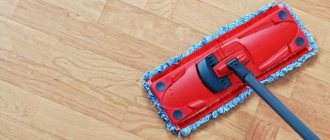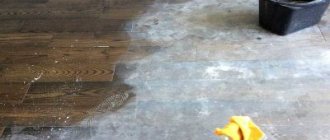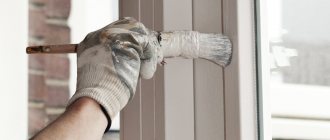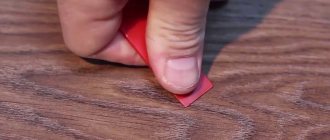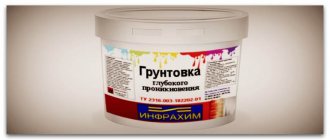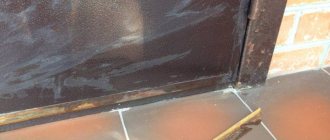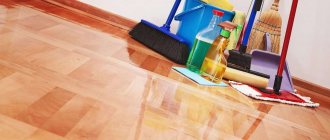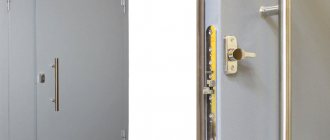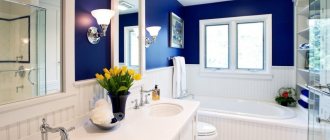The popularity of linoleum as a floor covering is due to its wear resistance, relatively low price, aesthetic appearance and ease of maintenance. But any repair can turn even the most unpretentious linoleum into a field after a military battle. To avoid damage to the floor covering, the editors of HomeMyHome.ru have prepared several working tips on how to clean linoleum after renovation.
The flooring needs care, otherwise it will soon need to be replaced, so you need to know how to wash linoleum
We remove dirt from linoleum correctly
Only linoleum for industrial and commercial purposes is covered with a protective outer layer, but it is more expensive and is rarely used in residential premises. Ordinary household flooring can be easily damaged by construction mixtures, so it is useful to learn how to wash linoleum after repair and not damage the surface.
Light stains can be removed with warm soapy water. The surface is washed quickly to prevent drying out - soap damages the linoleum. Then the floor is washed with cold water. A highly textured surface can be ideally cleaned with a powerful vacuum cleaner.
How to clean linoleum after renovation if there is a lot of construction dust on it? Wet cleaning will attract even more dirt, so dry cleaning is preferable. It is convenient to use several special absorbent wipes for this. Garbage can be collected with a vacuum cleaner or swept away with a broom or soft brush.
How to remove whitewash from the floor after renovation
It is difficult to remove lime or cement mortar from linoleum. If you wash it with aggressive cleaning solutions, the brightness of the color will fade, and streaks and deposits will appear. It is most convenient to purchase an eco-product designed specifically for these purposes. There are several more recommendations on how to wash whitewash from the floor after renovation using gentle methods.
Whitewash, plaster - how to remove:
- Plain warm water with soap shavings (100 g) and 3-4 tablespoons of finely ground salt per 10-liter bucket. Hot water will not work - the linoleum will fade.
- Potassium permanganate can effectively remove plaque and stains. It is added to warm water and stirred until completely dissolved.
- Milk and water in a 1:1 ratio will not only clean the floor of dirt, but also restore the shine to the coating. Vinegar, potato broth or a few tablespoons of starch have a similar effect.
Some tips on how to remove whitewash from a floor after renovation talk about the effective use of kerosene. But why use a liquid that leaves a very pungent odor that takes several days to dissipate?
When you manage to wash the linoleum and it has dried well, rub the floor with a piece of woolen cloth previously soaked in drying oil or linseed oil. This layer will bring back the shine.
Facilities
In order to wipe off various contaminants from the surface of linoleum and, if possible, return it to its original appearance, you can use both chemical and folk remedies. Both of them deserve special attention, because thanks to them you can refuse to purchase a new coating, thereby saving significant money.
Folk
There are many folk remedies available to everyone without exception. Their high efficiency has been proven and time-tested more than once. Each product is usually used for a specific type of contamination and consists of one or two components.
In order to return linoleum, which has been lying on the floor for many years, to its original shine, you should use milk and water. To do this, you need to mix equal parts of both components and treat the floor surface with this solution. Allow the floor to dry for some time and then rub the surface with a small piece of cloth containing wool fibers. The best effect can be achieved if you use 100% wool.
Very often, stripes form on the surface of linoleum. Most often, their occurrence is associated with traces of shoe soles. Most of these stripes form in the corridor. To remove them, you can use an ordinary school eraser. All you have to do is rub a little and the stripes disappear. Then you can wash the floor as usual.
Traces from a regular ballpoint pen can be easily wiped off using regular sulfur . It is easy to find sulfur; it is present in matches. First you need to wet the head of the match, and then rub it on the place where there are traces of the handle. The resulting paste is removed using a piece of lint-free cloth.
Potato starch helps prevent iodine stains. A paste-like mixture of starch and water is applied to the stained area. You need to keep the composition until the stain completely disappears from the surface of the linoleum. You can get rid of stubborn greasy stains with the help of elderberries.
Sauerkraut juice copes well with most all contaminants . The acid contained in the juice penetrates deeply into the structure of the coating and dissolves dirt without harming the linoleum, leaving the surface clean and smooth.
Chemical
In addition to folk remedies used to clean linoleum, a wide variety of chemical compounds are also used. Before using them, you must carefully read the information on the labels and only then, taking into account all the recommendations, use this product against specific contaminants.
An inexpensive and quite effective remedy is White Spirit . It copes quite easily with almost any type of contaminant. In order to avoid poisoning from volatile compounds when using it, it is necessary to provide a fresh supply of air. And also do not forget to wear protective gloves so as not to damage the delicate skin of your hands.
Solvent “646” is no less effective and easy to use. It shows its activity best against stains from paint and varnish materials. When working with this product, it is worth remembering that it is a toxic and flammable composition.
There are also less toxic products specifically designed for cleaning floor surfaces. As a rule, they are used not only to remove dirt from linoleum, but also from other coatings. These multifunctional products include the TaffStuss foam cleaner. It can be used for dry cleaning. A small piece of cloth and some foam will work great on most stains.
Floor cleaners do an excellent job with less complex stains. Today there are a huge variety of them produced, and therefore choosing the right copy will not be difficult.
How to wash the floor after painting
If you were unable to carefully paint the surfaces and a few drops of paint got on the linoleum, try to remove them immediately. Once they dry out, the task of removing them becomes more difficult.
Removing paint drops:
- Do not scrub away stains with baking soda or alkaline products. Linoleum will become brittle and brittle.
- If the stains have not yet dried, soften them with vegetable oil and rub them with a cloth or a stiff brush. It is not recommended to use sharp objects to avoid scratches.
- When asked what to use to clean the floor after painting, the first answer is solvent. If you still decide to use white spirit or other analogues, do a preliminary test: soak a cloth in the solvent and apply it to the stain in an inconspicuous place. Everything is fine? Then remove the dirt step by step and rinse the surface with clean water.
Are the above manipulations not enough? Apply a few drops of flaxseed oil to a wool cloth or clean sponge, treat the floor and buff it with a dry flannel to restore the shine.
General recommendations
There are many recommendations, following which you can avoid all sorts of problems associated with cleaning linoleum.
If changing linoleum is not part of your plans, and minor repairs are inevitable, then the simplest action would be to cover the floor. It is not necessary to specifically buy a film to cover the floor surface; you can use old wallpaper, newspapers, boxes, or packaging film from under the wallpaper. Since all these materials are smaller in size than the surface area, you can fix them with construction tape.
But if it so happens that the remains of building materials end up on the linoleum, then you should not use objects with sharp edges for cleaning. Drops of paint and remnants of stuck wallpaper should not be wiped off with a construction knife or spatula, as there is a high probability of damaging the surface of the linoleum.
Extreme caution must be exercised if aggressive agents are used as surface cleaning auxiliaries.
To check their effect, you must first test it on a small area, or better yet, on an unnecessary piece of linoleum.
The use of all kinds of alkaline solutions and soda is strictly prohibited. Products that contain alkali in different percentages penetrate deeply into the structure of linoleum, leading to the destruction of the material. The appearance of any linoleum will be irretrievably lost, and then the entire coating will have to be changed.
When working with any means, you must use special protective gloves. They can be purchased at any hardware store, they are not expensive, and they will protect the skin of your hands from the effects of the products used.
How to wash linoleum: special products
When choosing a special product, consider the type of coating, correctly calculate the concentration and follow the manufacturer’s recommendations. Powdered formulations are allowed to be used only after the granules have completely dissolved.
What to wash linoleum with depends on the type of contamination. The range of products is quite wide, so it is easy to choose the optimal composition for eliminating dirt of one type or another.
With the right choice of special products, stains, dried building materials, and lime stains can be removed in a few minutes. The compositions used do not have a negative effect on the surface, returning the linoleum to its original shine and neat appearance.
Methods of cleansing
To remove putty residues, you can use several methods. Each of them has its own technological process. The cleaning option depends on the type of coating.
Mechanical wash
The method is simple and does not require any special knowledge or skills.
The main disadvantage is labor intensity. Used: Manual work will take a lot of time. Mechanical processing is permissible for uneven structures:
Chemicals
The chemical removal method involves wetting the surface with the selected solution.
How to wash linoleum: floor rags
Floor cloths are used without rubber or metal threads. Old rags will do, but it is better to purchase special floor wipes made from environmentally friendly materials. You will need 2-3 pieces or more depending on the degree of contamination of the floor. Rags will have to be changed frequently.
It is advisable to wash by hand, but a mop with microfiber fibers or a foam roller will also work. It’s convenient if it is additionally equipped with a spin mechanism - you don’t have to bend down often and get your hands dirty. There are mops with two attachments for wet and dry cleaning. Using a regular mop is inconvenient and dangerous for the coating - linoleum is easily scratched.
The two-bucket technology is interesting: a solution with detergent is poured into one bucket, and water into the other. The rag is rinsed in the first bucket, the floor is washed, and the spin is done in the second bucket. The detergent is used sparingly, the dirt remains in the second bucket.
Required materials and tools
Finally, the renovation of the house is completed, the long-awaited day has arrived. Many people forget to cover the linoleum with a transparent film before repairing. And then you have to wash it of putty, paint and primer for a long time.
Before you get started, you should stock up on everything you need . In order to wash linoleum, you will need a lot of available tools. Namely:
- Putty knife.
- Cutter.
- Soap.
- Rag.
- Warm water.
- Bucket.
- Dish detergent.
- Salt.
- Soda.
- Vinegar or citric acid.
- Vegetable oil.
- Potassium permanganate.
- Hydrogen peroxide.
- Petrol.
- Alcohol.
Having this list at hand, you can quickly wash the floor covering from various contaminants.
Prevention, or How to avoid severe pollution
Cover the floor with newspapers, oilcloth or polyethylene, seal the joints and along the baseboard with mounting tape. It is better not to use adhesive tape if you are not going to repaint or change the baseboards; a layer of glue will remain on them, which will collect all the dirt. A simple method will help you enjoy the work done after the renovation, rather than spending hours cleaning.
Another option is to create an additional layer of mastic or polish on the linoleum. The protective film is applied once every six months. It protects the surface from external influences, moisture and sunlight.
Don’t put off taking care of linoleum for later - do preventive maintenance, remove stains immediately after detection.
Do not allow the dirt to become completely ingrained, because in this case the coating will have to be changed. Liked the articleDisliked the article
Preparatory stage
To avoid severe contamination, it is important to properly prepare the room before renovation. To do this, the floor is covered with a piece of oilcloth or polyethylene before work. To prevent the protective structure from moving, you need to secure it with tape to the baseboards.
An improvised coating will minimize the degree of contamination, but it will still not be possible to protect the canvas from painting dust or glue. If you neglect even these methods of protection, then you are guaranteed a long and painful cleaning.
To combat plaque, stains, and stubborn stains, the following materials and tools are used:
- bucket or basin for water;
- microfiber cloths or sponges;
- vinegar;
- salt;
- potassium permanganate;
- kerosene;
- dishwashing liquid;
- disinfectants, for example, Domestos;
- organic cleaning agents (LOK from Amway);
- laminate care products (Mr. Muscle, Mister Proper).
After determining the type of contamination, select the appropriate cleaner.
After preparing the tools and materials, perform the following steps:
- Before washing linoleum, clear the work area of furniture and other interior items.
- Collect large debris in a bag.
- Remove dust from the floor with a damp broom or construction vacuum cleaner.
- Use a damp cloth to clean off any major dirt.
- When the floor is dry, carefully remove any pieces of cement, primer, etc. with a spatula.
- If you can’t completely scrape off the marks, moisten them with warm water, leave for 20 minutes, and then remove with a rag.
- Wash the floor from the corner to the exit using movements toward you.
- Then wash off all the dirt from the rag, wring it out and wash the linoleum again.
It is important to change the water more often so that it becomes heavily contaminated, as stains and deposits will remain on the coating.
